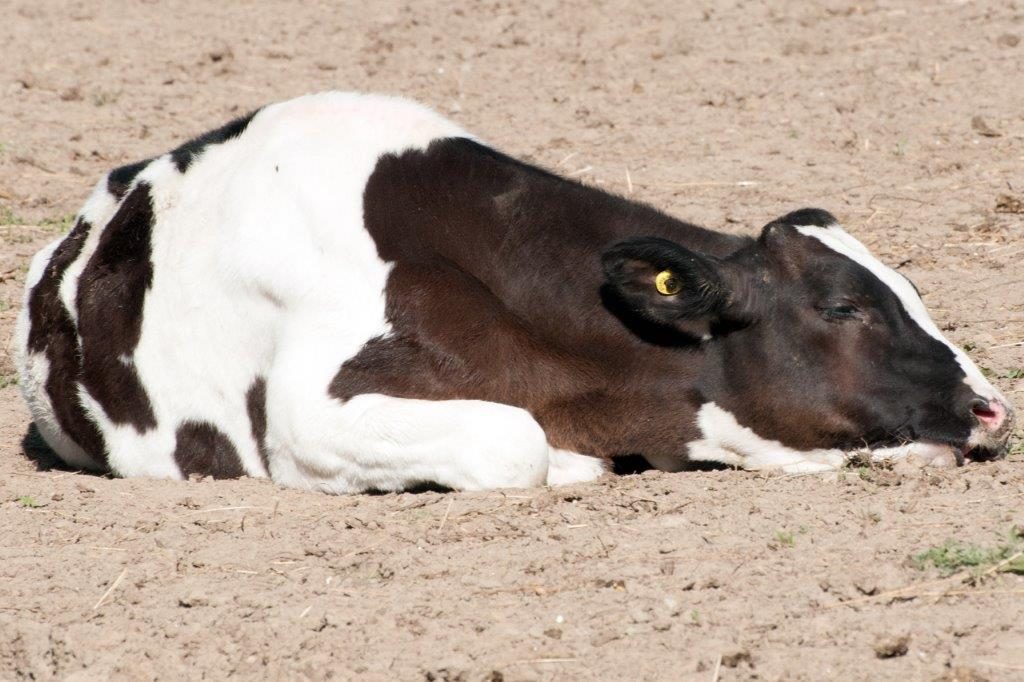Healthy Calf Conference
Follow to stay up-to-date on all Healthy Calf Conference updates. Speaker announcements, sponsorship information, registration announcements, and more.
Calf mortality has a significant economic impact on the farm. Identifying exactly why a calf has died can help improve calf health, management and welfare. When a calf dies, many producers don’t have a post-mortem conducted. They assume the calf died from pneumonia or diarrhea—two of the most com- mon health problems for calves. However, re- cent testing conducted as part of the Ontario Animal Health Network (OAHN) calf health surveillance project indicated unexpected calf deaths may be due to septicemia.

Septicemia occurs when bacteria enter the bloodstream and circulate throughout the body. They can cause damage to internal organs, resulting in the calf’s death due to multiple or- gan failures. Typically, bacteria gain access to the blood as a result of other infections, such as navel infections, pneumonia or diarrhea. Navel infections allow bacteria to travel directly into the bloodstream via the umbilical vein soon after a calf’s birth. Tonsils can also be another source of bacterial entry to the bloodstream. While the tonsils usually help filter ingested or inhaled bacteria or viruses, if their defences are overwhelmed by a high number of bacteria in a short period of time, the organisms can spread to the bloodstream and throughout the body. Some types of bacteria are more invasive and overwhelm a calf’s defences. This is often the case with Salmonella Dublin and some forms of the ever-present E. coli.
One of the challenges with septicemia is it can happen suddenly. Calves may not show many illness signs for very long. Some calves with septicemia will appear dull, weak, have a poor suckling reflex, be reluctant to stand and might have a fever. A fever, however, is not a tell-tale sign of septicemia since other minor infections can also cause a fever. Calves may not show dehydration signs unless diarrhea is also occurring. Occasionally, very young calves will also have meningitis—infection of the lining of the brain—with convulsions and other neurological signs occurring if bacteria have travelled via the bloodstream to the brain. However, more frequently, signs of septicemia are subtle and of short duration, and not usually detected by producers. Many times during the OAHN project, producers reported to their vet a calf was fine in the 24 hours prior to being found dead.
There is no treatment for septicemia. By the time it is recognized it’s often too late since infection has spread too extensively for antibiotics to be effective.
Septicemia occurs because the calf is born without an active immune system, and sufficient immune protection has not been provided by colostrum. This can happen for various reasons, such as not enough colostrum being fed soon enough, very low antibody levels in colostrum, the gut not being able to absorb the antibodies or too high bacteria counts in the colostrum, which can interfere with antibody absorption. Calves that ingest and absorb sufficient antibodies from colostrum have a lower septicemia risk. The oc- currence of septicemia in calves should lead to a close examination of the circumstances around a calf’s birth and an evaluation of the overall colostrum feeding protocol.
Ensuring calves receive four litres of colostrum within six hours of birth, are born into very clean, well-bedded calving pens and have mothers with clean, dry teat skin and hair is the best way to prevent infection.
Diagnosis of septicemia can be difficult be- cause animals die suddenly. Only a post-mortem with followup microscopic tissue exam- ination can indicate septicemia has occurred. As of December 2016, the OAHN calf health surveillance project has identified 13 cases of septicemia out of 32 calves enrolled in the project. Since such a high proportion of calves in this study died from septicemia compared with other causes, it suggests septicemia may be a larger cause of calf mortality than previously thought. This project, which runs until September 2017, involves working closely with your herd veterinarian to conduct post-mortems on calves less than six months of age to help determine the various causes of calf mortality. If you’d like to participate, contact your herd veterinarian to get started. The cost of the post-mortem and basic testing is covered by the project funds. Learning the cause of death may help improve calf management on your farm. Unexpected sudden deaths can be startling and upsetting. Post-mortem exam- inations can identify the cause and are a good investment, which can benefit the entire calf herd in the future.
For more information on the calf health surveillance project, visit http://wp.oabp.ca/ bovine-surveillance-project-on-calf-health/.
Follow to stay up-to-date on all Healthy Calf Conference updates. Speaker announcements, sponsorship information, registration announcements, and more.
The Codes of Practice are nationally developed guidelines for the care and handling of farm animals. They serve as our national understanding of animal care requirements and recommended practices.